Advantages of Transcanal Access to Cholesteatoma Acquired cholesteatoma is usually a manifestation of advanced retraction of the tympanic membrane that occurs when the sac advances into the tympanic cavity proper and then into its extensions such as the sinus tympani, the facial recess, the hypotympanum, and the attic.12 Only in advanced cases does a cholesteatoma progress further to reach the mastoid cavity proper. Most surgical failures associated with a postauricular approach seem to occur within the tympanic cavity and its hard-to-reach extensions rather than in the mastoid.13,14 Accordingly, the most logical approach to the excision of a cholesteatoma involves transcanal access to the tympanic membrane and tympanic cavity and the subsequent step-by-step pursuit of the sac as it passes through the middle ear. Mainstream ear surgery has usually involved the mastoid and the postauricular approaches because operating with the microscope through the ear canal is a very frustrating and an almost impossible process. The view during microscopic surgery is defined and limited by the narrowest segment of the ear canal (▶ Fig. 2.1). This basic limitation has forced surgeons to create a parallel port through the mastoid to gain keyhole access to the attic, the facial recess, and the hypotympanum (▶ Fig. 2.2). In contrast, transcanal operative endoscopy bypasses the narrow segment of the ear canal and provides a wide view that enables surgeons to look “around the corner,” even when a 0° endoscope is used (▶ Fig. 2.1). The “working space” in endoscopic surgery is cone shaped, and above the apex of the cone “the ear canal” needs only to be wide enough to admit the endoscope and surgical instruments. In contrast, microscopic surgery requires an upside-down conical “working space” that requires much more bone removal superficially to obtain access and to prevent the surgeon from “digging his/herself into a hole.” Rediscovery of the ear canal as the access port for cholesteatoma surgery is the main story and the main advantage of endoscopic ear surgery. This allows a more natural and direct access and pursuit of cholesteatoma within the middle ear cleft. One clear example of this difference in access is the facial recess. If approached through transcanal endoscopy, it really ceases to be a recess and becomes just a small depression on the back wall of the mesotympanum that can be reached within 10 minutes of the start of the operation (▶ Fig. 2.3). In contrast, the microscopic technique requires a cortical mastoidectomy and identification of the facial nerve and provides a limited, keyhole access between the chorda tympani and the facial nerve. In other areas, such as the hypotympanum and sinus tympani, the microscope offers minimal to no accessibility even with extensive postauricular mastoidectomy. The wide view provided by the endoscope enables minimally invasive transcanal access to all areas within the tympanic cavity and facilitates the complete extirpation of disease without the need for a postauricular approach or incision. Fig. 2.1 The view from the microscope during transcanal surgery is defined and limited by the narrowest segment of the ear canal. In contrast, the endoscope bypasses this narrow segment and provides a very wide view that allows the surgeon to “look around corners,” even when the 0° endoscope is used. Fig. 2.2 The limited view provided by the microscope during transcanal procedures has forced surgeons to perform postauricular mastoidectomy, in which a port parallel to the attic is created after a considerable amount of healthy bone has been removed to enable anterior keyhole access to the attic. Fig. 2.3 Left ear. Endoscopic view through a transcanal endoscopic access after minor removal of bone; the facial recess (fs) is very shallow and is essentially more of a flat depression, more or less at the same level as the pyramidal eminence (pe) and the vertical segment of facial nerve (fn); s, stapes. Use of the transmastoid approach to cholesteatoma blurs our understanding of the anatomy of the temporal bone and the clear anatomical, morphological, and functional partitioning of the middle ear cleft between two distinct compartments: The first compartment, a posterosuperior one, is formed by the mastoid and attic. The second compartment is an anteroinferior one that is formed by much of the tympanic cavity proper (▶ Fig. 2.4).15 These two compartments are separated anatomically by the epitympanic diaphragm. This diaphragm is composed laterally of the lateral incudomalleal and lateral malleal folds that separate the lateral attic from the mesotympanum (▶ Fig. 2.5). Anteroinferiorly, the tensor fold separates the attic from the anterior mesotympanum and the eustachian tube and forms the anterior part of this diaphragm (▶ Fig. 2.6). In the majority of ears, there are only two points of communication: the main one is the anterior isthmus (▶ Fig. 2.7), the space defined by the incudostapedial joint and the tensor tympani tendon, and a very variable posterior isthmus just posterior to the incudostapedial joint. This anatomical separation is poorly visualized with the microscope and these two structures, the tensor fold and the lateral attic folds, are rarely identified and visualized in day-to-day surgery. In contrast, the endoscope allows for routine inspection of these structures through the transcanal access (▶ Fig. 2.7, ▶ Fig. 2.8). In addition, during transmastoid microscopic surgery, the surgeon peeks through into the tympanic cavity after creating a large working space in the mastoid and connecting it to the tympanic cavity to gain access. Thus by the time the tympanic cavity is reached, these two cavities have already been joined. The previously described anatomical separation mirrors a functional separation with a primarily mucociliary clearance function anteroinferiorly provided through a ciliated, pseudostratified epithelium that is populated by numerous mucous-secreting cells and covered with cilia. The posterosuperior compartment has a gas exchange function through a thin layer of simple cuboidal cells, thin stroma, and blood vessels that lie in much closer proximity to the surface and therefore to the interface with the air-filled mastoid cavity (▶ Fig. 2.9).15 The distinction carries through morphologically as well, with a very different look in these two compartments: the anteroinferior compartment being smooth walled and the posterior compartment filled with excrescences (▶ Fig. 2.10). These distinctions are rooted in the embryology and development of the middle ear spaces, which will be discussed in detail in Chapter ▶ 3. This separation and the narrow isthmus serves as the most probable cause of isolated attic cholesteatoma.16 Fig. 2.4 Schematic representation of the two compartments in the middle ear air system that are separated by the epitympanic diaphragm. Fig. 2.5 Left ear. The lateral attic is closed off from the mesotympanum by the lateral incudomalleal and malleal ligament. Note the relatively straight insertion line of the lateral incudomalleal ligament and the downward sloping insertion line of the lateral malleal ligament. ma, malleus; cp, cochleariform process; amlf, anterior ligament fold of the malleus; mlf, malleolar lateral fold; imlf, incudomalleolar lateral fold; ct, chorda tympani; ttc, tensor tympani canal; s, stapes; in, incus. Fig. 2.6 Left ear. The anterior attic is separated from the supratubal recess and the eustachian tube by the tensor fold, so there is no direct communication or ventilation anteriorly between the attic and the eustachian tube. ma, malleus; in, incus; ct, chorda tympani; aes, anterior epitympanic space; tf, tensor fold. Fig. 2.7 Left ear: Looking through the isthmus with a 30° endoscope. ma, handle of malleus; ttc, tensor tympani canal; tf, tensor fold; cp, cochleariform process; in, incus; fn, facial nerve; lsc, lateral semicircular canal; et, eustachian tube; cog, Sheehy’s cog. Fig. 2.8 Right ear. a A 45° endoscope is used to detect the tensor fold anteriorly with respect to the malleus. b Endoscopic magnification of the inferior edge of the tensor fold (45° endoscope). ma, malleus; ttc, tensor tympani canal of the malleus; tf, tensor fold. Fig. 2.9 Comparative histology of the two compartments. a: Anteroinferiorly the mucosa is ciliated pseudostratified epithelium that is populated by numerous mucous-secreting cells and covered with cilia. b: The posterosuperior mucosa is a thin layer of simple cuboidal cells, thin stroma, and blood vessels that lie in much closer proximity to the surface and therefore to the interface with the air-filled mastoid cavity. Fig. 2.10 Left ear. The tensor tendon has been transected and the handle of the malleus has been removed, as has the anterior spine, anterior malleal ligament, and chorda tympani. Note the distinction between the smooth wall of the supratubal recess (belonging to the anteroinferior compartment) and the numerous tags and excrescences of the attic. cog, Sheehy’s cog; sr, supratubal recess; cp, cochleariform process; gg, first genu of the facial nerve and neighboring geniculate ganglion; lsc, lateral semicircular canal; ttc, canal of the tensor tendon of the malleus; fn, facial nerve. Another anatomical observation that supports transcanal access to the attic, which is the most frequent site of cholesteatoma,17 is the orientation of the ear canal in relation to the attic. ▶ Fig. 2.11 shows a coronal CT section through the temporal bone, which reveals that an axis line drawn through the ear canal ends in the attic rather than the mesotympanum. The only structure that is in the way is the scutum, and its removal allows wide and open access to the attic, which is the natural cul-de-sac of the external auditory canal. Fig. 2.11 A coronal CT section of the temporal bone, showing that an axis line drawn through the ear canal ends in the attic rather than the mesotympanum. This almost universal anatomical orientation enables a natural transcanal access to the attic. As indicated earlier, the wide view of the endoscope is the main advantage of its use in transcanal surgery. However, there are also other, less significant advantages, including the following: The ability to visualize past the shaft of larger surgical instruments. When using the microscope, the field of view is compromised further by the introduction of instruments and possibly by the surgeon’s hands. In endoscopic surgery, the surgeon gets a bird’s-eye view of the field beyond the shaft of the instrument. When using the microscope, it is important to bring the structure almost to a right angle to the axis of the microscope. In contrast, the endoscope can visualize structures that lie in the same plane as the endoscope. Accordingly, structures such as the ear canal, facial recess, and tegmen are much better visualized using the endoscope. Changing the magnification with the endoscope is simply achieved by moving it closer to the structure in question. In addition, there is no need for refocusing when changing position.
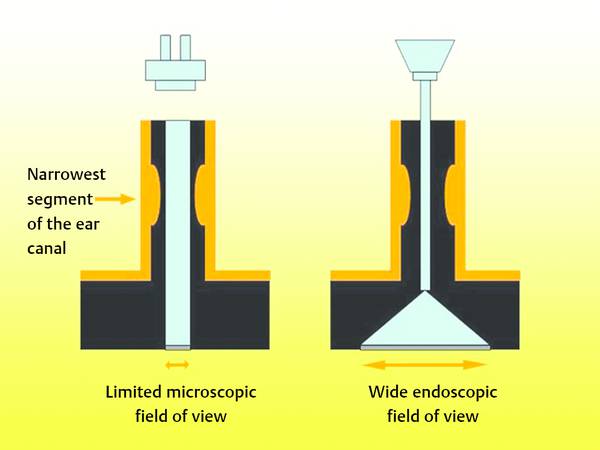
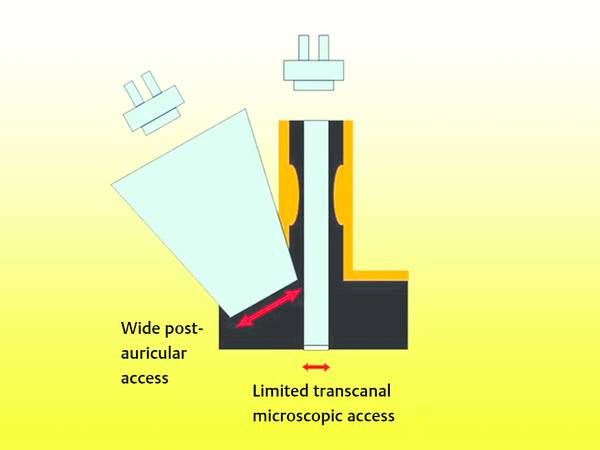
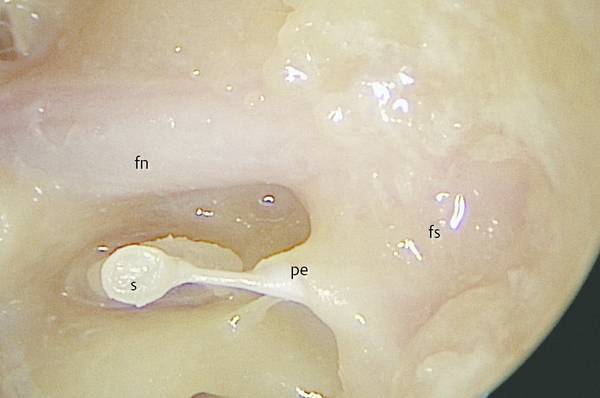
2.3 Transcanal Access Allows Better Understanding of Anatomy, Function, and Disease
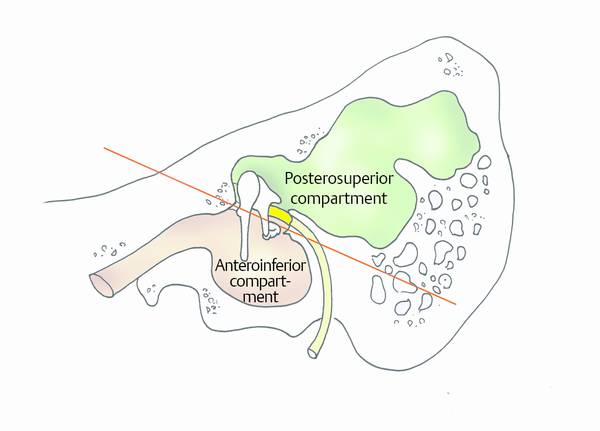
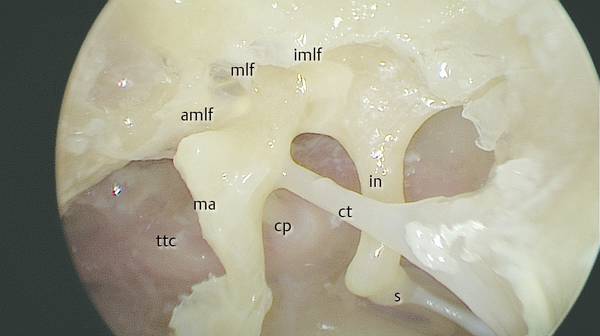
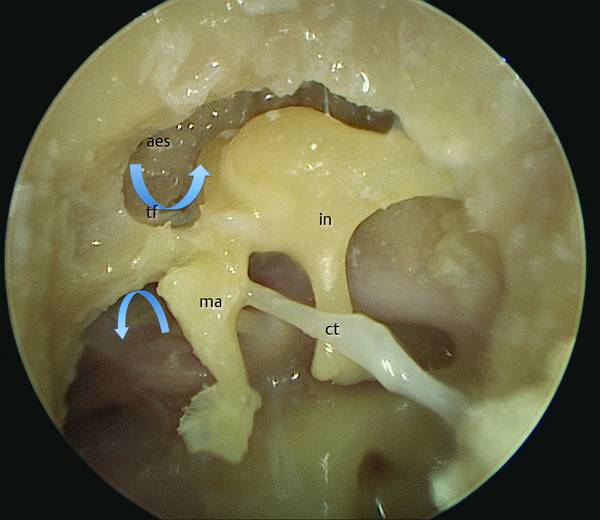
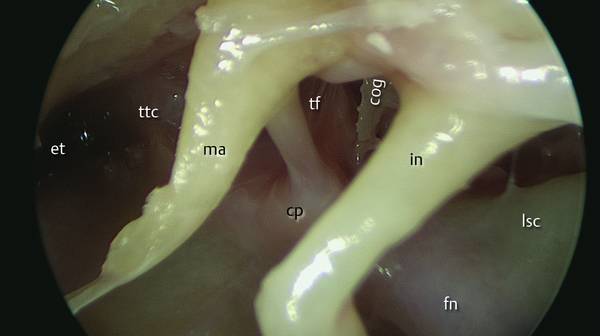
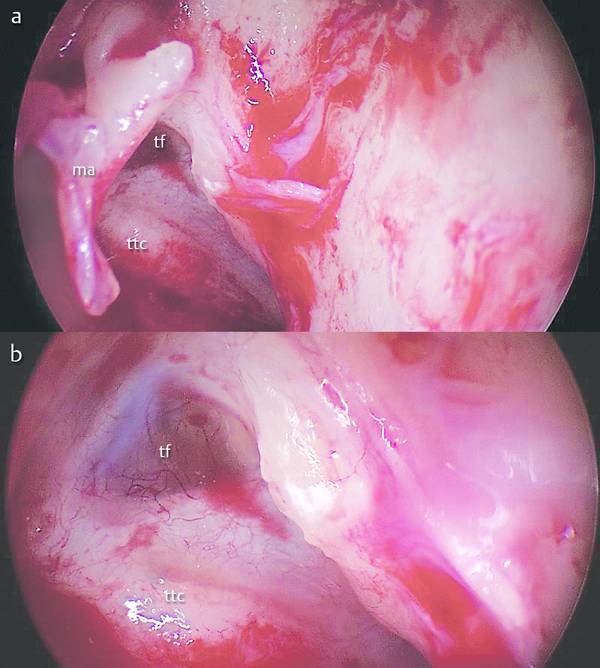
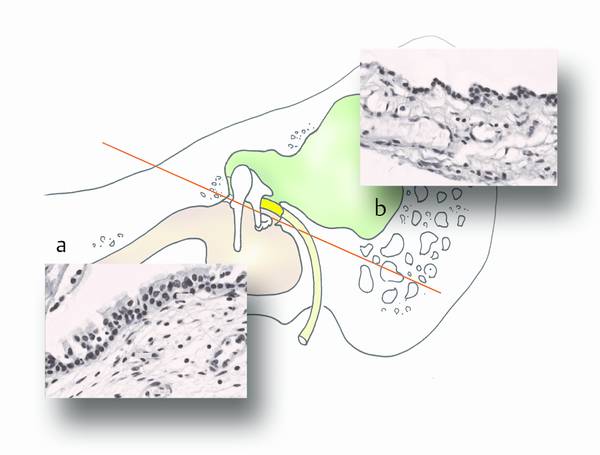
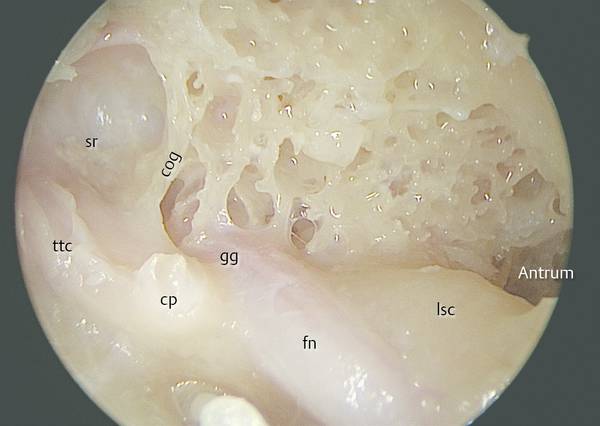
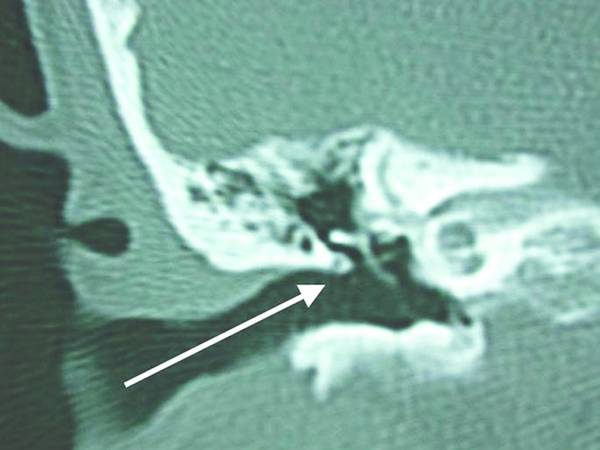
2.4 Disadvantages of the Endoscope
Stay updated, free articles. Join our Telegram channel

Full access? Get Clinical Tree


